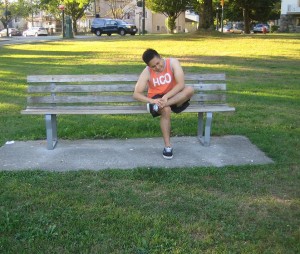If a joint that connects the big toe to the foot has a sore, swollen bump, it clearly indicates a bunion. Many women have bunions which is a common deformity often due to wearing tight, narrow shoes and high heels. Bunions can occur in families but most cases are caused by wearing tight shoes. Overly tight shoes can also cause other incapacitating foot problems such as calluses, corns and hammertoes.
https://www.youtube.com/watch?v=xGtSEK5QMoI
The base of the big toe enlarges and sticks out. The skin over it can be tender and red. Using any type of shoe can also cause pain since the joint flexes with every step taken. If the bunion gets bigger, it will cause more pain while walking.
How to manage bunions
Most cases of bunions can be managed without surgery. Remember that prevention is always preferred. You can reduce the development of a bunion by avoiding shoes that do not fit. When managing the pain, you can register for first aid training today.
It is important to select shoes that conform to the shape of the feet. Opt for shoes that have wide insteps, soft soles and broad toes. Avoid shoes that are tight, short or pointed sharply as well as those that have heels higher than 2 ¼ inches.

If the individual has a bunion, he/she must wear shoes that have enough space to avoid pressure on it. This is enough to relieve most of the pain. It is best to stretch out the shoes professionally as well as utilize protective padding to cushion the painful areas.
Once the bunion has progressed to the point where there is difficulty in walking or experience pain despite using comfortable shoes, surgery might be needed. The surgery for bunion involves realignment of the bone, ligament, nerves and tendon so that the big toe is positioned to its correct position. There are various techniques that can help ease the pain. Most of the surgeries are performed on a same-day basis utilizing an ankle-block anesthesia. A long recovery period is common and can include persistent stiffness and swelling.
Adolescent bunions
Teenagers particularly girls between 10-15 years old can develop adolescent bunion at the base of the big toe. Unlike with the adult bunions, adolescents can normally move the affected joint. In most cases, there is pain and difficulty wearing shoes.
It is best to have the shoes stretched or opt for wider shoes. Surgery is not usually recommended unless the child experiences severe pain and the issue do not subside with changes in the footwear. If surgery is performed, there is a chance for the issue to return.
What is a bunionette?
If an individual has a sore swollen lump on the exterior of the foot close to the base of the little toe, it might be a bunionette. In some cases, there is also a hardened corn and sore bursitis in the same area. Take note that a bunionette is similar to a bunion. Using shoes that are too tight can cause it. With this in mind, use shoes that fit comfortable with a soft upper and enough toe box space. In case of persistent pain or severe deformity, surgery is required.
